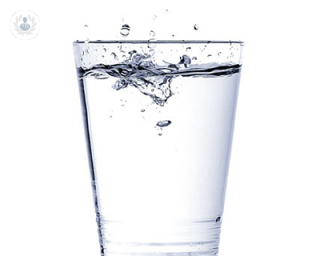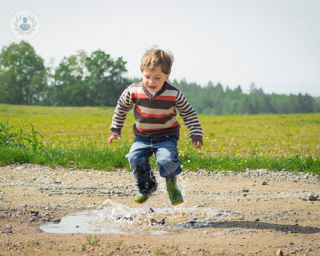Urinary tract infections in children
Dr Kishor Tewary - Paediatrics
Created on: 04-28-2017
Updated on: 09-29-2023
Edited by: Carlota Pano
What is a urinary tract infection?
A urinary tract infection, or UTI, is the one of the most common infections in children. It is not difficult to diagnose due to characteristic symptoms and non-invasive investigations, however it does need to be treated timely and effectively to avoid any long-term damage to the kidneys, especially in young children.

What are the symptoms?
Symptoms and signs can often be non-specific in infancy, including:
- vomiting
- diarrhoea
- loss of appetite
- weight loss
- being irritable
At this age, it is very important for parents to get their baby checked if they feel their baby is not well for an unknown reason.
In older children (after infancy), a urinary tract infection usually displays symptoms of:
- pain when passing urine
- fever (usually above 38 degrees)
- feeling generally unwell
A urinary tract infection can also be associated with other symptoms, including pain in the abdomen/flanks.
In adolescence and older age groups, a urinary tract infection can present with localised symptoms such as cystitis, which is an inflammation of only the bladder when the patient is otherwise feeling well, but experiences pain when passing urine.
Urinary tract infections in children can also cause haematuria (passing blood in the urine) and secondary enuresis (having leaks of urine in the day and night time after being dry for more than six months).
How is a urinary tract infection diagnosed?
The symptoms of a urinary tract infection are usually specific enough for the paediatrician to make a diagnosis. The diagnosis can further be supported with other simple investigations, such as checking the urine sample for pus cells and nitrite, an enzyme present due to bacteria. The gold standard of investigation is still to culture the urine in a laboratory to see which bacteria is causing the infection, if any.
Sometimes, further investigations may be needed, including an ultrasound of the kidneys/bladder, and other special types of X-rays, more so in younger children.
In terms of investigations - the urine sample should be a clean catch. GPs often do not advise on this, and the majority of urine samples submitted are contaminated giving rise to false evidence of infection.
Parents should clean the child's genital area, usually with a cotton wool soaked in water or a quick wash, and then a midstream urine sample should be collected in a sterile wide bore container - this can be obtained from your GP surgery. This can be very difficult in females, and there are urine pots available nowadays with a funnel for an easy clean collection.
How is it treated?
Urinary tract infections are often easy to treat with first line antibiotics, and the duration of antibiotic prescription is often less than a week. It is important for the doctor to prescribe the right kind of antibiotic, based on the culture sent to the laboratory.
The recurrent urinary tract infection diagnosis (> 2-3 episodes of urinary tract infection) should be treated under supervision of a specialist, and it may need further investigations such as ultrasound and special X-rays, as well as a longer term night time antibiotic for the prevention of a further urinary tract infection and any subsequent damage to kidneys, ie scarring.
Can a urinary tract infection be prevented?
Urinary tract infections are often caused through poor bladder habits, lack of correct hygiene, constipation, and poor liquid intake.
Parents should encourage their children to drink at least 6-8 glasses of clear liquid every day, have a regular bowel habit with soft stool, and maintain good hygiene. Daily showers/baths are recommended, if possible.
Children should also have a habit of going to the toilet every 2 to 4 hours for passing urine in the daytime.










